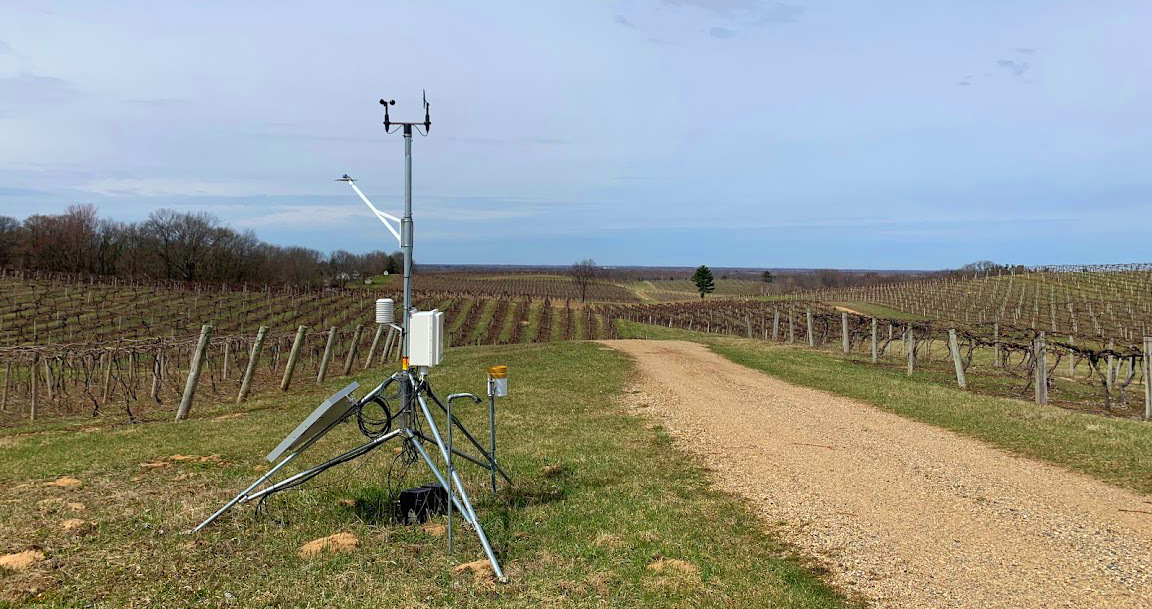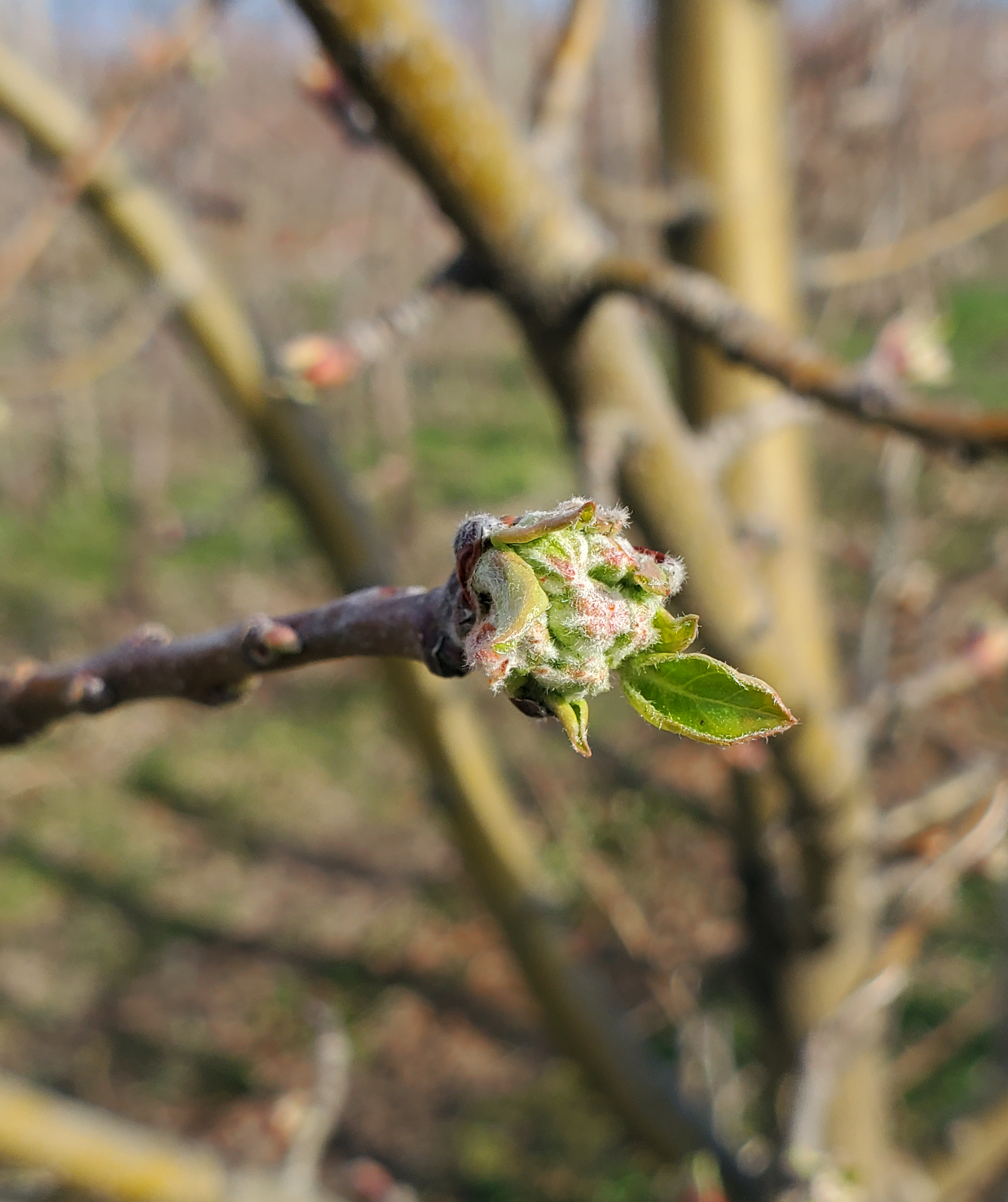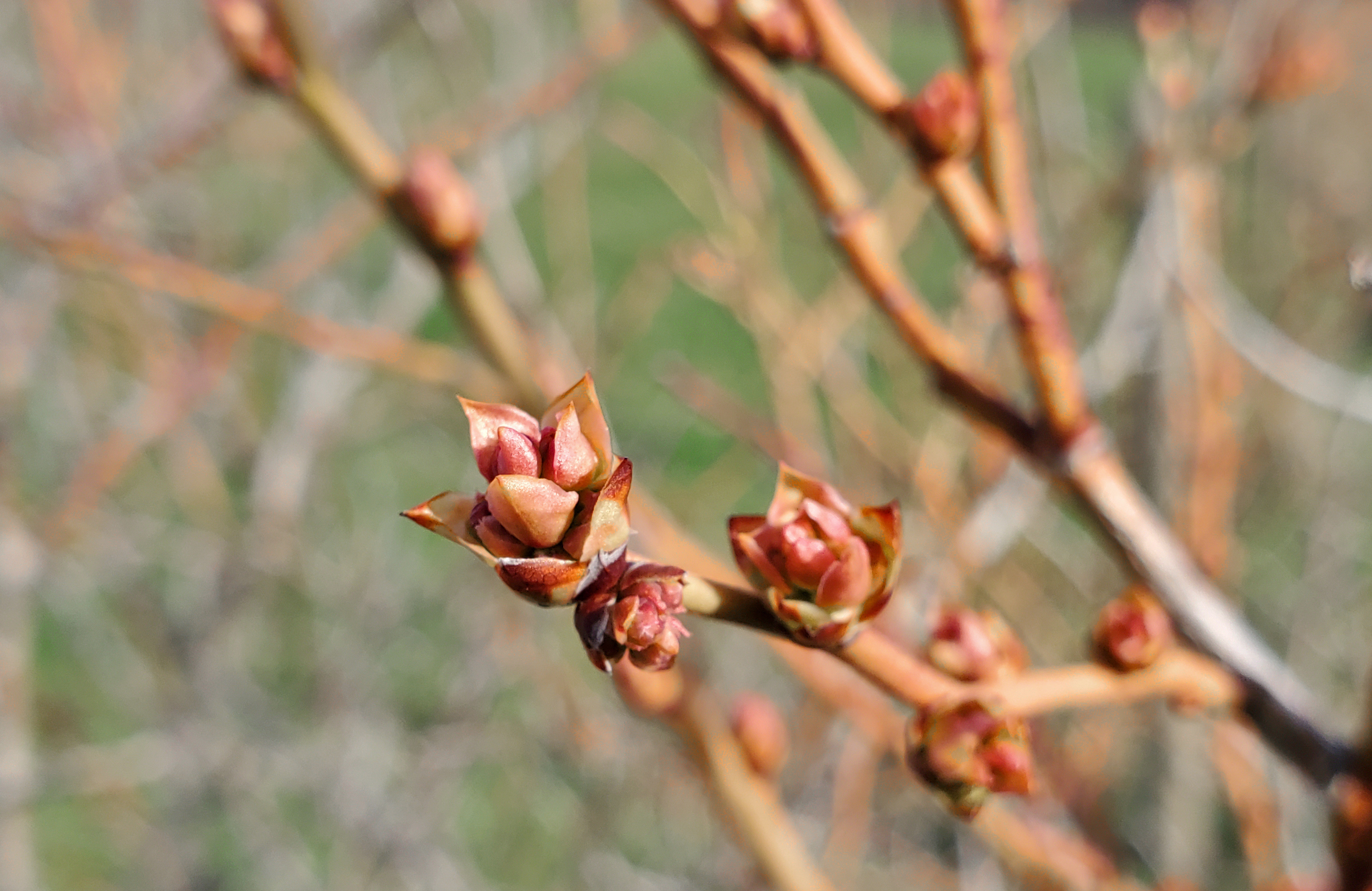Southwest Michigan fruit update – April 12, 2022
Petal tissues are starting to be seen in some stone fruit. Some apples are near tight cluster. Development will continue with this week’s warmer weather.

Weather
Last week started warm. The first half of the week saw high temperatures in the mid-50s and lows near 40. A storm system on Wednesday, April 6, brought cooler weather with it, bringing high temperatures back down to the 40s for the rest of the week and weekend. The low temperatures near 30 on Saturday and Sunday were too warm to cause any significant damage to fruit crops.
Rain fell almost every day last week, but no severe storms were recorded. Total rainfall for the past week was around 0.75 inches.
The coming week should be warmer than last week. The first part of the week will have high temperatures in the 60s and lows fluctuating between the 40s and 50s. A storm system will come through southwest Michigan on Wednesday, April 13. There are chances of wind and lightning from this system. The temperatures behind the system will drop first into the 50s, then down into the 40s by the weekend. Low temperatures by the weekend will be near freezing.
Over the past week, we collected 33 growing degree days (GDD) base 42 and 10 GDD base 50.
|
Southwest Michigan GDD summary from March 1 – April 12, 2022 | |||
|---|---|---|---|
|
Station |
GDD 42 F |
GDD 45 F |
GDD 50 F |
|
Benton Harbor (SWMREC) |
139 |
98 |
51 |
|
Lawton (Lawton) |
134 |
97 |
50 |
|
Fennville (TNRC) |
109 |
76 |
35 |
|
Average for the SW region |
132 |
94 |
49 |
|
Average last week |
99 |
70 |
39 |

Tree fruit
Development has continued at a slow pace. Only minor impacts are expected from winter temperature lows on Jan. 28 and Feb. 13 when temperatures reached down to 1 F to -7 F in some sites.
Growers continue to make good progress pruning. Check blocks for evidence of San Jose scale on branches to determine the need for oil sprays. The window for treating trunks with pyrethroids for black stem borer has been delayed by cool conditions.
Apricot buds are red calyx with the first hint of blossom tissue.
Peach and nectarine fruit buds are showing swelling, with green showing on terminal ends on some varieties. Low levels of copper generally help suppress bacterial spot populations.
In cherries, both tart and sweet cherries are at side green. Copper sprays can be safely applied to cherries. Copper applications may reduce bacterial canker in cherries.
In plums, Japanese and European fruit buds continue to swell. Some Japanese varieties have green fruit buds and European plum are showing some green tips. Prune out black knot and dispose of the knots by burning or removing them from the orchard. Sanitation is an important step in managing this disease. Fungicide control generally starts at green cluster. Most varieties of European plums are more susceptible to this disease than Japanese plums.
Apple varieties in central Berrien County range from 0.25-inch green to early tight cluster. Scab sprays are needed during the primary scab season to protect against ascospores being released in rains. Copper sprays can provide early scab control and fire blight suppression. Copper fungicides are less persistent than mancozeb and captan in rains. Protectants are preferred over systemic fungicides at this time of year for scab control to reduce the number of systemic fungicide applications and thereby slow the development of resistance. Mancozeb fungicides are compatible with delayed dormant oil sprays, which may be needed in sites battling scale.
Powdery mildew control generally starts at pink. Oil sprays have become more important with the loss of chlorpyrifos. Although fire blight has not been severe in southwest Michigan in recent years, this could quickly change with the right weather conditions. Michigan State University Extension continues to monitor the spread of streptomycin-resistant fire blight westward into Berrien and Allegan counties. Alert MSU Extension fruit educators if fire blight symptoms show in your orchard. Apogee application has become an important tool to help suppress fire blight, especially in young susceptible apple varieties.

Pear buds are at bud burst and require protection against scab. Be prepared for fire blight management at bloom. Oil applications at this time help with suppression of pear psylla.
Small fruit
Grape buds show small amounts of movement in juice varieties but pruned canes have been bleeding. Pruning is almost finished for many growers.
Blueberry flower buds appear swollen with some separation in early varieties. Leaf buds are starting to swell in early varieties but show no movement in most fields. This is still a good time to be scouting for mummy berry. Growers still have time to apply copper, Sulforix or lime sulfur products to suppress early season diseases.

Strawberries have greened up and new leaves are emerging from the crown. Overwintering mulches should be removed and raked between the rows. Some growers are putting out floating row covers. Growers are looking at early season herbicides to control overwintering weeds. When selecting an herbicide, check the preharvest interval (PHI).
Brambles show movement with buds enlarging and beginning to separate in some areas. New canes are starting to be seen in some fall bearing raspberry fields. Dormant pruning should be completed soon. In summer bearing raspberries, last year’s primocanes should be headed (cut back) to the desired height and any remaining floricanes from last year should be removed. Fall bearing raspberries should be cut or mowed to the ground soon. Lime sulfur treatments for anthracnose can still be applied.
Cranberries are still dormant and fields are red.
Currant and gooseberry leaves are opening.
Upcoming meetings
Our regular Southwest Michigan Monday Fruit IPM Updates will be moving to a hybrid format. The meetings will be held in person with virtual attending also available online. Our next meeting is Monday, April 18, at 5:30 p.m. You need to register to receive the Zoom link and password for these meetings. The webinars are free and two pesticide applicator credits are available for each meeting.
Related articles
- Welcome Cheyenne Sloan, new blueberry and small fruit educator
- Southwest Michigan fruit update – April 5, 2022
- Southwest Michigan fruit update – 2021 review
- Freeze damage depends on tree fruit stage of development
- 2013 bloom dates for southwest Michigan tree fruit crops
- Using Enviro-weather’s regional overnight temperature report during cold events
- Treat peach leaf curl now
- Managing bacterial canker in sweet cherries: What are the options?
- Early insect control with horticultural oils
- Dormant oil for tree fruit pest management in 2015
- Scouting and management of mummy berry in blueberries
This work is supported by the Crop Protection and Pest Management Program [grant no 2021-70006-35450] from the USDA National Institute of Food and Agriculture.



 Print
Print Email
Email




